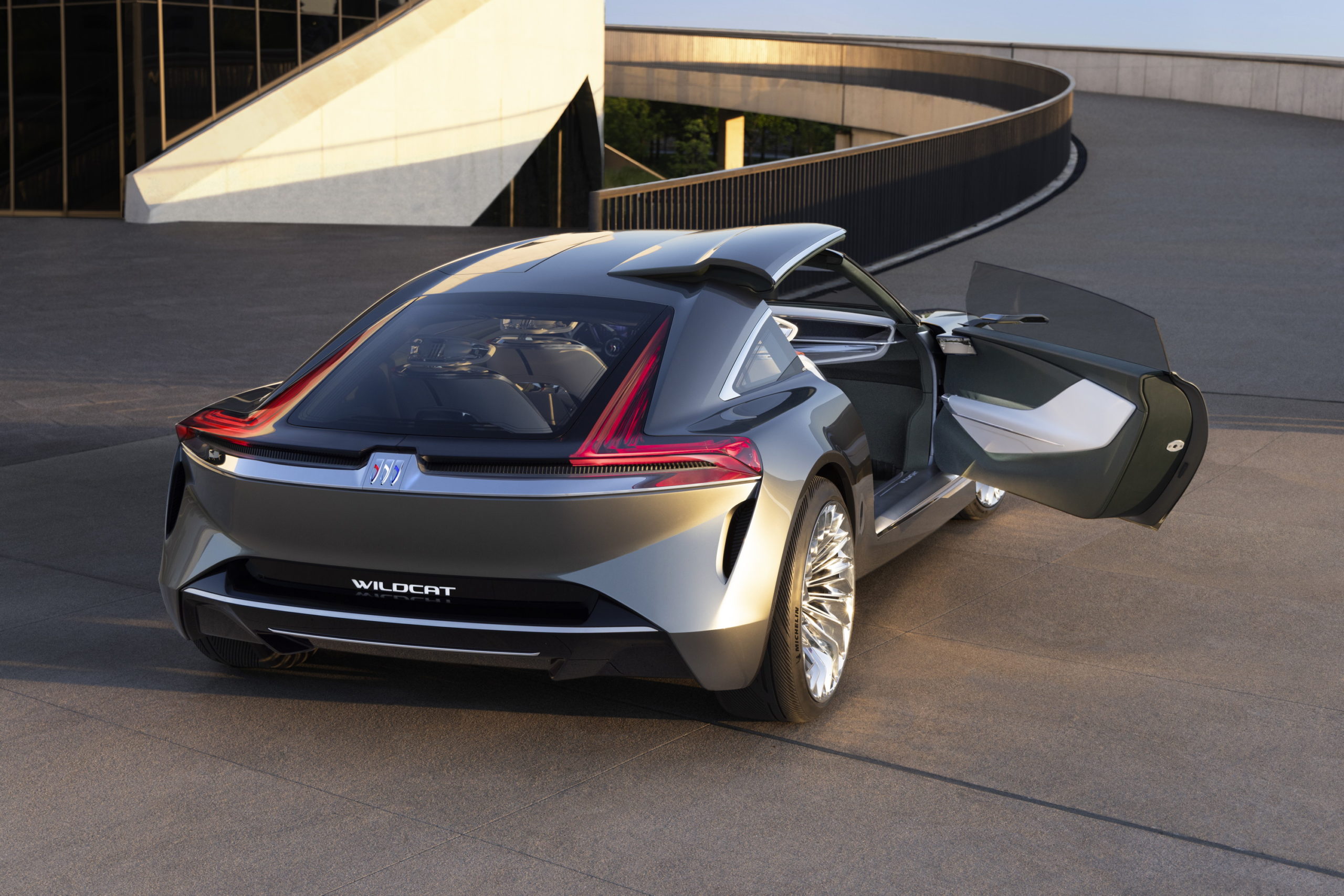Buick has revealed the Wildcat EV, a concept that showcases the American brand’s future design language as it targets an all-electric portfolio by the end of the decade.
Concurrently, Buick has also debuted a new tri-shield logo that will adorn its new production models from next year onwards, and confirmed that its first all-electric vehicle will arrive in North America in 2024.

Buick Wildcat EV concept
Boasting the “new, expressive face for Buick”, the Wildcat EV – which revives the name reserved for Buicks that push the design envelope, and was last used in 1985 – features a far more aggressive design set to inspire its production vehicles for the foreseeable future. Among the most notable elements are the low, trapezoidal front grille, and slick “check marked-shaped” headlamps that extend into voluminous housings in the front bumper. The wraparound windshield cascades into a tapered roofline, a facets creates a “powerful, expressive presence,” and the 2+2 coupé sits atop massive, “Jet Age-inspired” 18-inch ‘turbine’ wheels. In a neat touch, the Wildcat also features “semi-swing” doors, the roofline above which extends upwards – partially akin to a gullwing – for easier entry and egress.

Buick Wildcat EV concept
The sleek design continues on the inside, though Buick ascertains that the cabin design prioritizes both new technologies and ride comfort. Among the most notable elements are the “prominent console” that extends through the rear-seats – oddly transmission tunnel-esque for an EV – and cockpit-style seats with cantilevered headrests that appear to float.
A ‘sweeping’ touchscreen dominates the full-width dashboard, and is mirrored by a second display incorporated into the centre console. Both control the infotainment system.

Buick’s new tri-shield logo. The new badge will be body-mounted onto the front fascia of Buick products starting in 2023.
Among the more interesting technical aspects of the Wildcat is ‘Zen Mode,’ a system that measures the driver’s heart rate and adjusts the cabin’s ambient lighting, activates the massage seats, and dispenses aromatherapy scents accordingly. A similar concept was recently previewed in the cabin of the BMW i7 limousine.
“The Wildcat EV concept represents the real design future for the brand,” Buick and GMC design executive director Sharon Gauci explains. “Buick has always been forward looking and this expression is a glimpse of where we’re going, and the optimism we have for the limitless possibilities of an electric future.”
Presented more as a design study rather than a preview to an upcoming production model, the Wildcat EV has nevertheless led to speculation as to whether Buick’s first all-electric model – the ‘Electra’ – will be modelled after the 2+2 coupé. Few details have been provided other than the new EV’s scheduled arrival in North America in 2024, though increased sales in 2021 – 73 per cent of which came from customers new to the brand – plus the all-new design language suggest this could be a possibility.
Alongside the design language, a new Buick shield – the first major revision of the badge since 1990 – was also presented on the Wildcat’s nose and between the blade-style taillights. No longer a circular logo, and rather than overlapping and cascading, the three columns are now aligned and are said to represent “fluid movements” also set to be found in its future vehicle design.
“The Buick brand is committed to an all-electric future by the end of this decade,” said Buick and GMC global vice president Duncan Aldred explains. “Buick’s new logo, use of the Electra naming series and a new design look for our future products will transform the brand.”
The new logo will feature prominently on Buick’s new vehicles from 2023 onwards, the brand having also confirmed a new typography and new colour palette will be introduced as its digital and physical presence is updated over the next 12 to 16 months.






